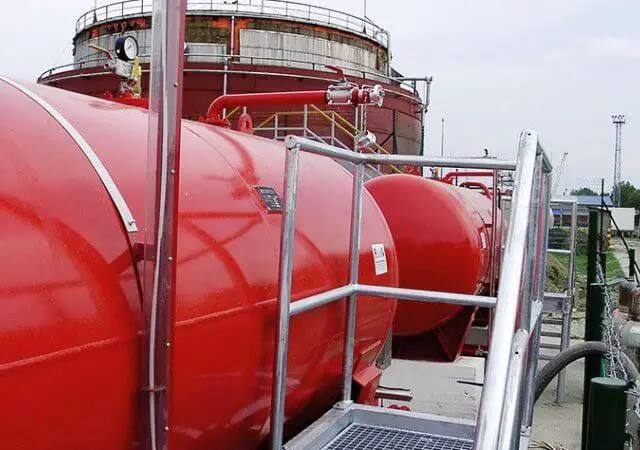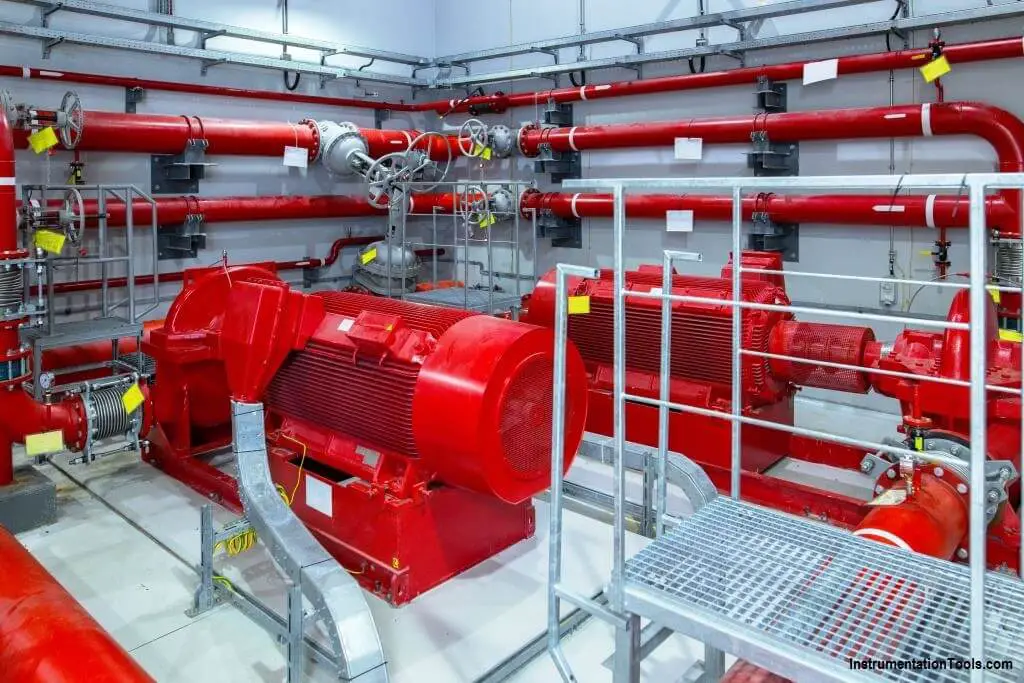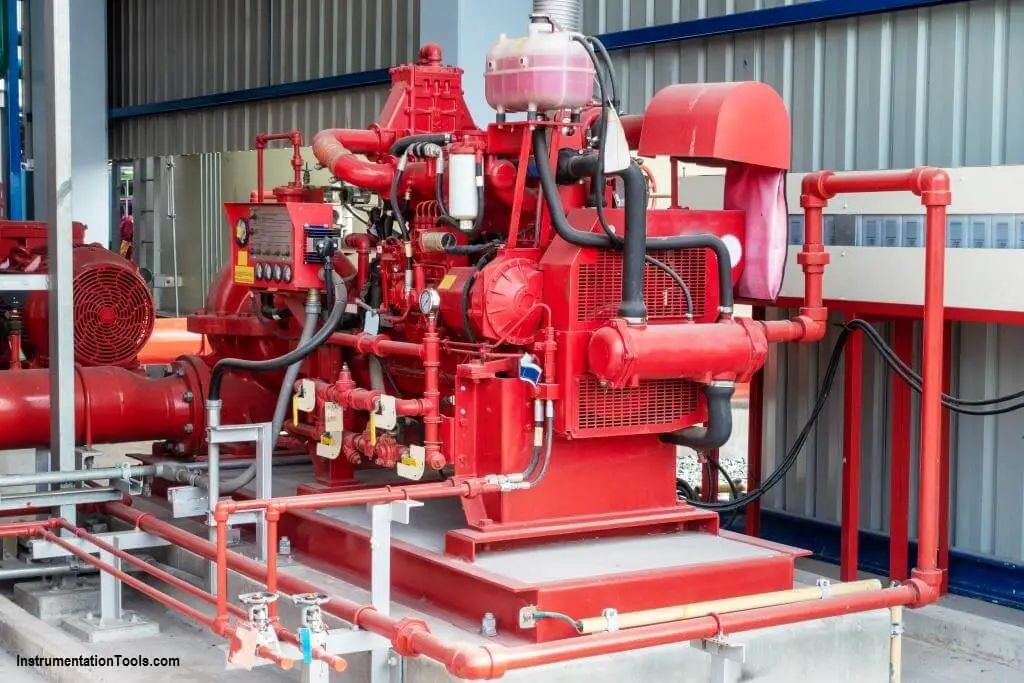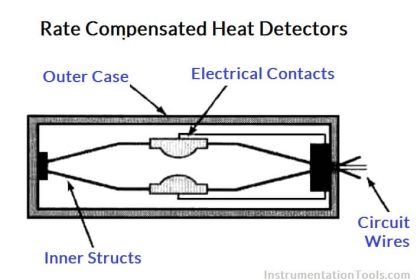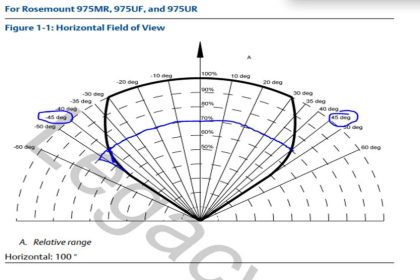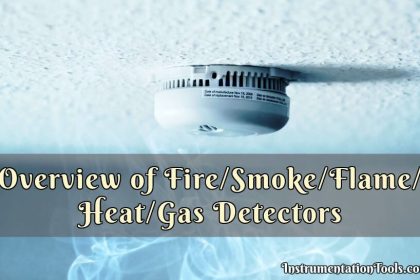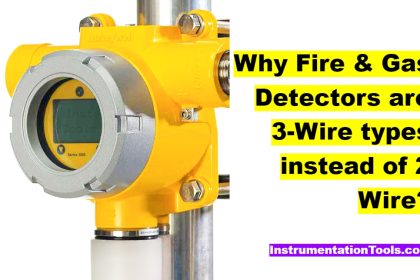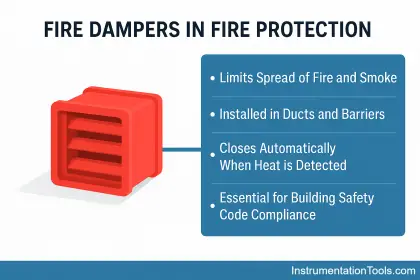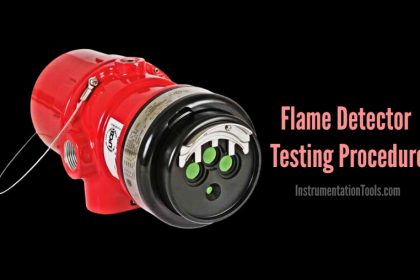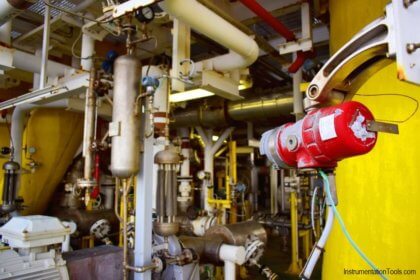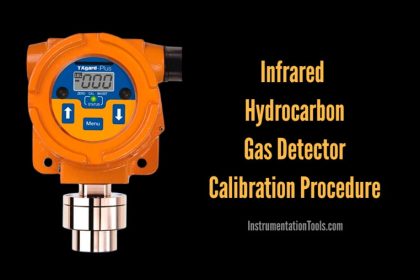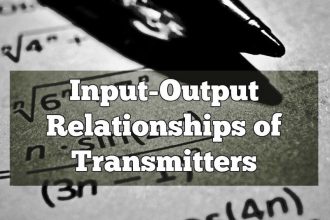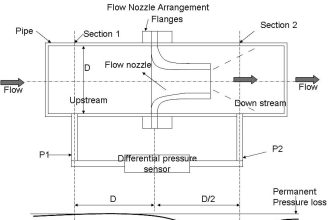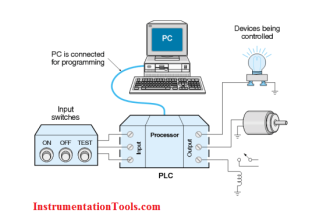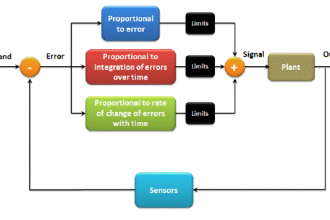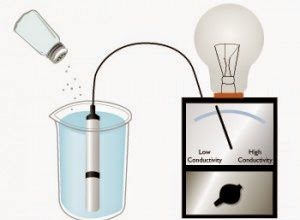A Fire Fighting System is probably the most important of the Industrial service, as its aim is to protect human life and industrial property, strictly in that order. The National Safety Council (NSC) of India keeps an eye on the Safety Rules and Regulation.
Fire Fighting System
The Fire Fighting System Consist of Three Basic Parts:
1. A large storage of water in tanks, either underground or on top of the building, called a fire storage tank.
2. A fire water Pump House
3. A Large Network of pipes ending in either hydrants or sprinklers (covering all areas in the plant)
The Storage Tanks
If you have observed carefully in the industrial area or in the individual chemical factory you must have seen the RED color large storage tanks, these are a water storage tanks for an emergency fire situation. Its capacity depends on the area of how much you need to cover with water.
The storage water can be done in any way such as discussed a large tank or a underground storage with open to atmosphere.
The pump house consists of following the equipment’s
- Jockey pumps
- Electrical Fire Hydrant pump (also called as Electrical Main Pumps)
- Diesel Engine Fire hydrant pump (also called as Diesel Main Pumps)
- Diesel Storage Tanks
- Fire water pipeline network
- Annunciation system
Jockey Pumps
The Jockey pump name itself tells us the pump is in jogging mode i.e. it’s just maintain the Water Pressure in the fire water pipeline which is running around the Industry.
The water pressure to be maintained in the pipeline is in between 5 to 7 kg/cm2. Pressure transmitters are mounted on the fire water pipelines to monitor the pressure, usually 3 no.s. will be installed or depends on plant philosophy.
The pressure transmitters will be set with LOW and HIGH setpoints.
When the pressure in the fire water pipeline drops below 6kg/cm2, the jockey pump starts automatically to maintain the fire water pressure in the pipeline as per the setpoint.
When jockey pumps are in auto mode then the pumps can be started and stopped as per the LOW and HIGH setpoints of the pressure transmitter.
For example, if there is an emergency usage of fire water in the pipeline, then the pressure will drop suddenly then the jockey pumps will be started automatically to maintain the required pressure. If pressure drops below a certain point then main pumps (electrical or diesel) will be started as per their setpoints.
Electric Fire Hydrant Pumps
The electric pumps works on 3 phase AC supply. The electrical fire water pumps are of high capacity than the jockey pumps. These pumps start as soon as the pressure drops below the certain point, usually lower than the jockey pump setpoint.
While pump working in emergency situation, if the dark out occurs then the electric pump will get off. This is the worst condition may occur when using main electrical fire water pumps, to overcome this disadvantage the NSC has an instruction to install a Diesel engine pump which will turn ON automatically when the dark out (Total power failure in the plant) occurs.
The main electrical pumps are designed to start automatically when the fire water pipeline pressure drops to a certain level. The pumps will be stopped manually only.
Diesel Engine Fire Hydrant Pump
The Diesel engine fire hydrant pumps work same as other diesel engine. Which start with help of UPS supply and utilize diesel for running the Main Pump, The DG SET has large storage fuel tank as a backup.
The main diesel pumps are designed to start automatically when the fire water pipeline pressure drops to a certain level. The pumps will be stopped manually only.
The whole Fire Fighting System work on the Following Logic-
1. When the pressure of fire water pipeline drops below 6kg/cm2 then jockey pump should start automatically and stops after reaching 7kg/cm2 pressure.
2. When the fire water pipeline pressure drops below 5kg/cm2 then the main fire water pumps will be started automatically. Each main pump either electrical or diesel have individual setpoints. If pressure drops certain level then each main pumps will start automatically. Note: Pumps must be in auto mode. All main pumps either electrical or diesel can be stopped manually only.
3. When the Dark out (power failure) occurs in the plant, then Diesel engine pumps will maintain the fire water pipeline pressure at the time of fire fighting.
Author: Jadhav Amit R
Read Next:
- Fire Alarm Control Panel
- Chlorine Gas Hazards
- Addressable Fire Alarm System
- Negative Readings in Gas Detectors
- Fire Extinguishers Mock Test
